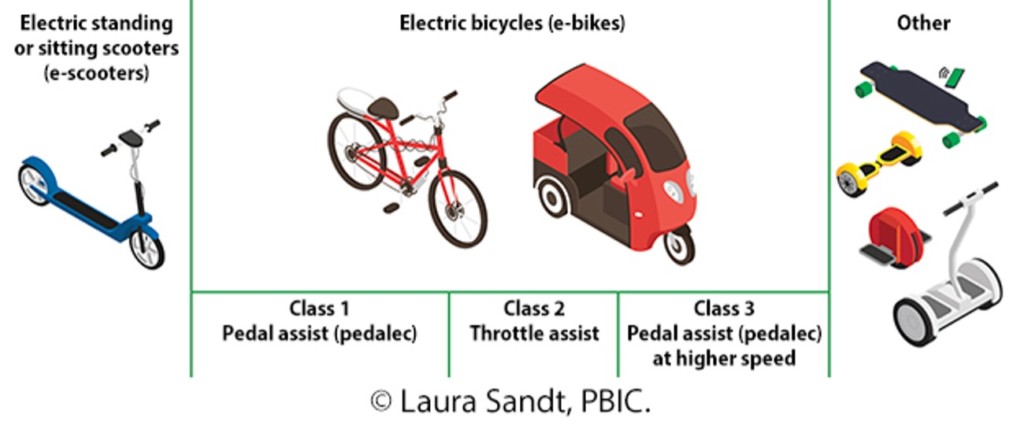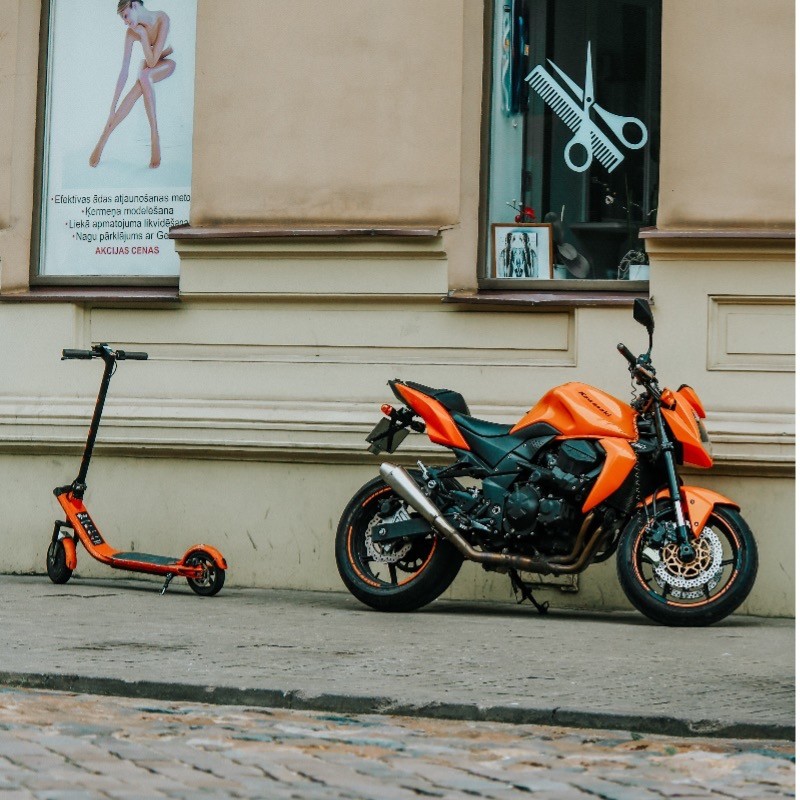They’re everywhere! Whether you’re on your way to do some grocery shopping or are visiting a friend living a couple of kilometers away; there’s no missing that group of scooters standing parked on the street. Brightly colored and easily accessible from a mobile app, e-Scooters have easily come to dominate our urban infrastructure and are becoming hands-down the preferred mode of transport to cover intra-city trips without the hassle of being stuck in traffic, having to buy a ticket or worse, walk. Plus, they’re electric (most presumably as they don’t belch plumes of smoke shooting out of tailpipes) and so, are completely climate friendly right…. right?
First, some context
In the United States, micromobility refers to vehicles with a mass of no more than 350 kg and a design speed of no more than 45 km/h. The global micromobility market revenue was estimated to have a total size of over 2.55 billion USD in 2019. And despite a minor blip during the pandemic years, it is expected to grow massively as the energy transition seeks to give electric mobility a boost. In Europe alone the market for shared e-scooter services is expected to reach at least 12 billion USD by 2025 [1].

For the greater good
And why shouldn’t e-scooters be promoted? It is visible that the increasing use of private transport has had multiple effects on the urban space (in terms of parking lots, streets and mile-long traffic) and its livability, thus presenting the account of its unsustainability. Moving and parked cars occupy valuable urban spaces useful for citizens and it is moreover made worse by their greater impact on the urban environment. According to recent surveys by the Max-Planck Institute, up to 26% of Covid-19 deaths were due to air pollution. And so, it clearly makes sense for us to switch to greener and more efficient transport modes [2]. Enter the electric-powered micro–Personal Mobility Vehicles (specifically, the humble e-scooter).

The Devil is in the details
In a survey taken from 90 studies from over 100 countries between 2014 and 2020, it was found that e-scooters were considered an attractive transportation mode for the feeling of freedom and fun and for reducing trip time. Firms like Lime and Bird enabled 86 million trips on e-scooters across the U.S in 2019 alone [3]. More importantly however, it appeared that e-scooters would replace walking and cycling without reducing the use of private cars for short trips [4]. This is what we DON’T want them to replace.

Although seen as a godsend for our last-mile problem which is increasingly affecting traffic and pollution in cities, e-scooters are a worse solution in comparison to even public (diesel) buses when it comes to stopping global warming. A 2019 study conducted in North Carolina, USA, shows that over their entire lifecycle e-scooters produce more than 5 and 1.5 times more grams of CO2 per passenger kilometer driven in comparison to e-bikes and e-mopeds respectively [5]. And even though they produce half the emissions than a car, only 34% of e-scooter trips replace a journey that would have otherwise been made by car. In comparison, more than 50% of e-scooter trips were found to replace walking and 11% replacing bus rides. Not exactly green, is it? Because the scooters’ additional emissions are greater than any gains made from car journeys not taken, the study concludes that e-scooter rental programs add to transport emissions overall. What’s more, a 2022 study conducted in Aachen, Germany was able to correlate an ambivalent relationship between micromobility and public transport i.e. micromobility competes with public transportation as trips are often faster; however, in areas or times with low public transit service coverage, micromobility also largely complements it [6]. A ray of sunshine is that e-scooters might actually fare better if implemented in rural areas, where car ownership is high because public transit is not well developed.
Where do we go from here?
By now, it must be as clear as day that any new form of transport is neither going to be emission free, nor is it going to make up for the decades of emissions that we’ve already spewed out. What we must now focus upon is making sure that we collectively emit less than we’ve done before. This means that we have to think of e-scooters and e-bikes as ancillary means that fill in the gaps in the existing network. We have to think intermodally.

Intermodality enables a user to make use of different modes of transport as parts of the same journey. With the growing availability of shared mobility such as car sharing and scooter rentals, companies seek to increasingly fill in the gaps in our transport system. All to get from A to B in a quick and comfortable manner (with the bonus of lesser emissions per person!). This rise of the Mobility-as-a-Service (MaaS) ecosystem has the potential to create a new and open business model. One where an organization does not only use its own solutions but also uses ideas from its external environment to solve our mobility and environmental issues simultaneously.
References
- https://www.statista.com/statistics/1022246/estimated-global-shared-e-scooter-market-size-by-region/
- https://www.mpg.de/15952279/1028-chem-099020-air-pollution-as-co-factor-of-covid-19-mortality
- https://nacto.org/2020/08/27/136-million-trips-taken-on-shared-bikes-and-scooters-across-the-u-s-in-2019/
- https://www.mdpi.com/2071-1050/13/7/3692/htm
- https://iopscience.iop.org/article/10.1088/1748-9326/ab2da8
- https://www.mdpi.com/2071-1050/14/14/8247/htm
- https://www.wired.com/story/e-scooter-rentals-carbon-emissions/


It’s great that you elaborated on how e-Scooters have quickly taken control of our urban infrastructure and are now without a doubt the most popular way to go around the city without having to deal with traffic. This will be helpful for my cousin who goes to the grocery store weekly. It will be essential if she finds an electric scooter rental to avoid any hassle on her way.
check this one of the selling electric scooters in 2022.. here is the official website link of versatile Electric scooters https://versatileescooter.com/
Very worth written blog.Thanks for sharing. Too much detailed and informative for beginners and also for developers who want to Develop an e-scooter-app-development. but miles of the journey start with a single step. Nowadays people focus on time and Quality.
Thanks for sharing this article it will be helpful to everyone who wants to develop an E Scooter app, keep sharing like this Mam/Sir. Good luck!
Your article is really great! A lot of information about E-Scooter App development will be helpful to me, so keep sharing like this Mam/Sir. Good luck!
Thanks for your information! nice post
A Laundry App Development Company specializes in creating customized mobile applications for laundry and dry-cleaning businesses. These apps typically include features like user registration, order scheduling, real-time tracking, payment integration, and push notifications. The goal is to streamline operations, enhance customer convenience, and improve service efficiency.
An E-Scooter App Development Company specializes in creating innovative and reliable solutions for the growing micro-mobility market. With expertise in real-time GPS tracking, seamless payment integration, and intuitive user interfaces, these companies offer end-to-end development services tailored to your business needs. Whether you’re launching a startup or expanding an existing fleet, their scalable and secure platforms ensure smooth operations.